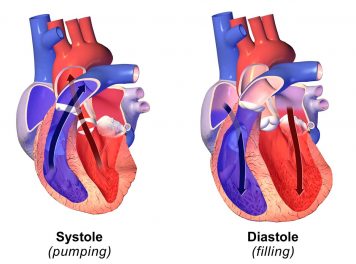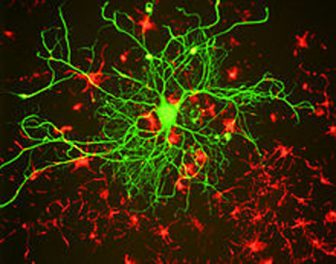
A microarray, which can be used to analyze a large number of DNA variants at the same time. (Credit: iStock)
By Shawna Williams
Photo caption: A microarray, which can be used to analyze a large number of DNA variants at the same time. (Credit: iStock)
Several large international groups of researchers report data that more than doubles the number of sites in the human genome tied to blood pressure regulation. One of the studies, by Johns Hopkins University scientists in collaboration with many other groups, turned up unexpected hints that biochemical signals controlling blood pressure may spring from within cells that line blood vessels themselves.
The three studies appear Sept. 12 in the journal Nature Genetics. The Johns Hopkins-co-led study, with first author Georg Ehret, MD, a research associate, was a so-called genome-wide association study involving information gathered on 342,415 people of both European and non-European descent.
“It’s thought that about half the explanation for our blood pressure comes from environmental and lifestyle factors, like diet, exercise and smoking, and the other half is controlled by our genes,” says Aravinda Chakravarti, PhD, professor of medicine in the Johns Hopkins University School of Medicine’s McKusick-Nathans Institute of Genetic Medicine and leader of the Johns Hopkins component.
“But as with many other complex, multigene traits, pinning down what those genes are is challenging.” Prior to the new studies now reported, Chakravarti says, his and other groups had identified some 90 sites in the genome as likely linked to blood pressure regulation, but in sum, they could not explain all variations in blood pressure measurements.
To identify what the scientists were convinced had to be more sites, researchers from 265 institutions worldwide banded together to perform the genome-wide association study.
Participants’ genomes were examined on computer chip-like devices known as microarrays, which had been customized to simultaneously analyze nearly 200,000 sites in the genome where variations from person to person were suspected to have some effect on blood pressure. They then compared variants at the sites with information on each individual’s blood pressure information to nail down likely associations.
Ehret, a research associate in Chakravarti’s lab, crunched the numbers from all the study sites and found variants at 66 sites in the genome — 17 of them newly reported — that had statistically significant associations with blood pressure levels.
At the same time, Ehret and Chakravarti were also involved in another of the studies reported in the new issue of Nature Genetics. That study identified 31 additional and distinct new blood pressure-related sites and confirmed a further 39 that had been previously reported. It used data from 327,288 people and focused on rare genetic variants.
Still, says Ehret, “even taking all the known variants together, we explain only about 2 to 3 percent of the blood pressure variability between individuals.” He estimates there are “hundreds or thousands” of blood pressure-linked variants still to be found, and identifying them will require studies with even more participants.
One benefit of gathering those missing genetic puzzle pieces would be to enable a genetic test to predict whether a person is likely to develop high blood pressure and, if so, would suggest early intervention, Ehret says.
One surprising finding from the study co-led by Johns Hopkins, Ehret says, was that many of the new sites identified were near genes that are active in cells that line the inside of blood vessels, suggesting those cells are somehow involved directly in blood pressure control.
“As a physician, I would have suspected the kidney, and perhaps the adrenal gland, of sending signals to control blood pressure,” he says. “But it seems that the blood vessels themselves may also be part of the cause of hypertension.”
High blood pressure, or hypertension, affects one in three adults in the United States, according to the Centers for Disease Control and Prevention. The condition increases the risk for heart disease and stroke, but most people with high blood pressure aren’t aware they have it.
Additional authors can be found in the paper.
This study was funded in part by the National Heart, Lung, and Blood Institute, the National Human Genome Research Institute, and the National Institutes of Health.







